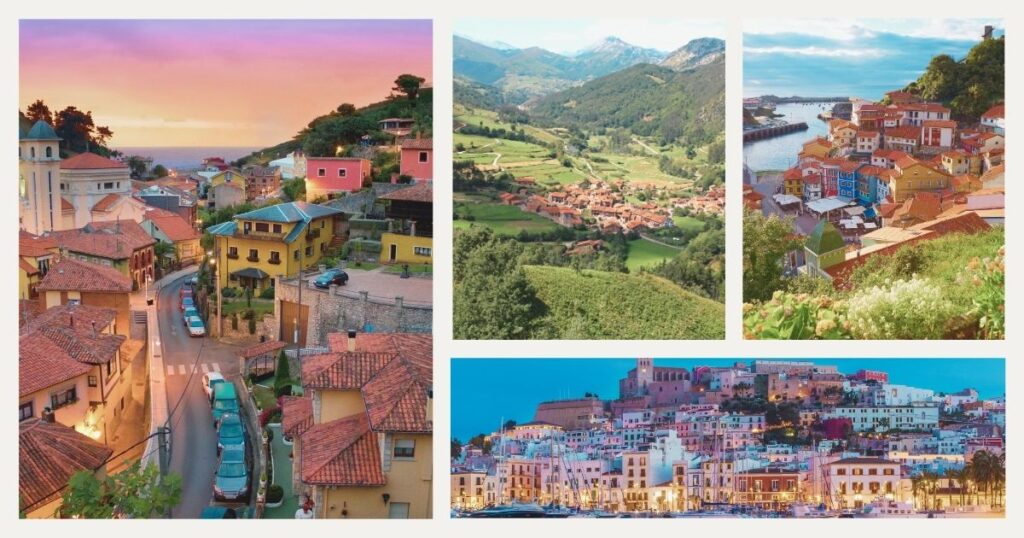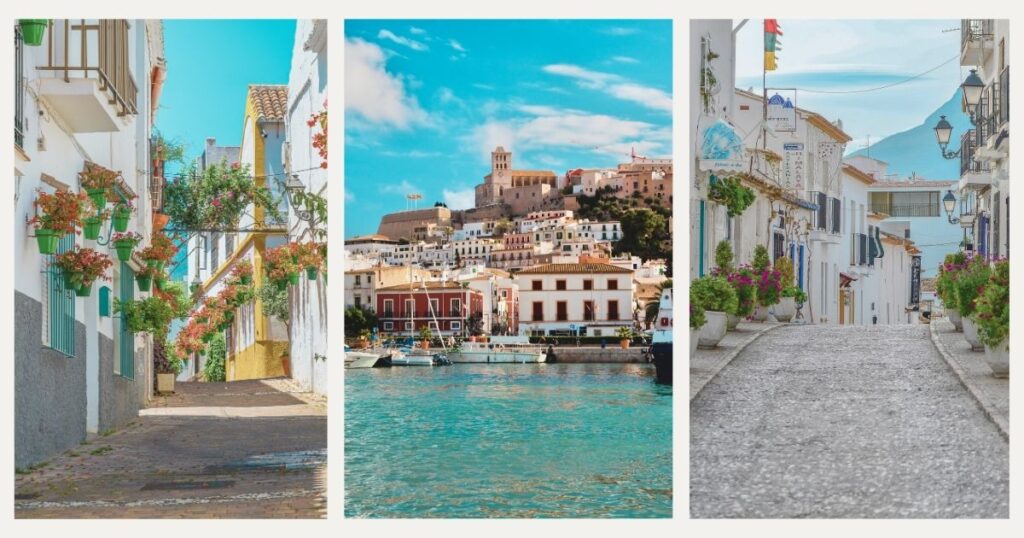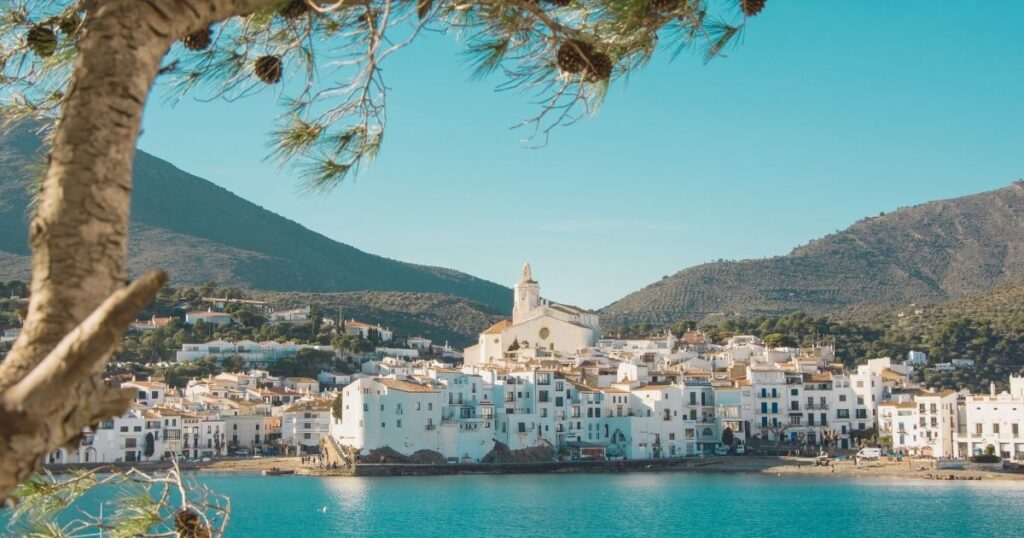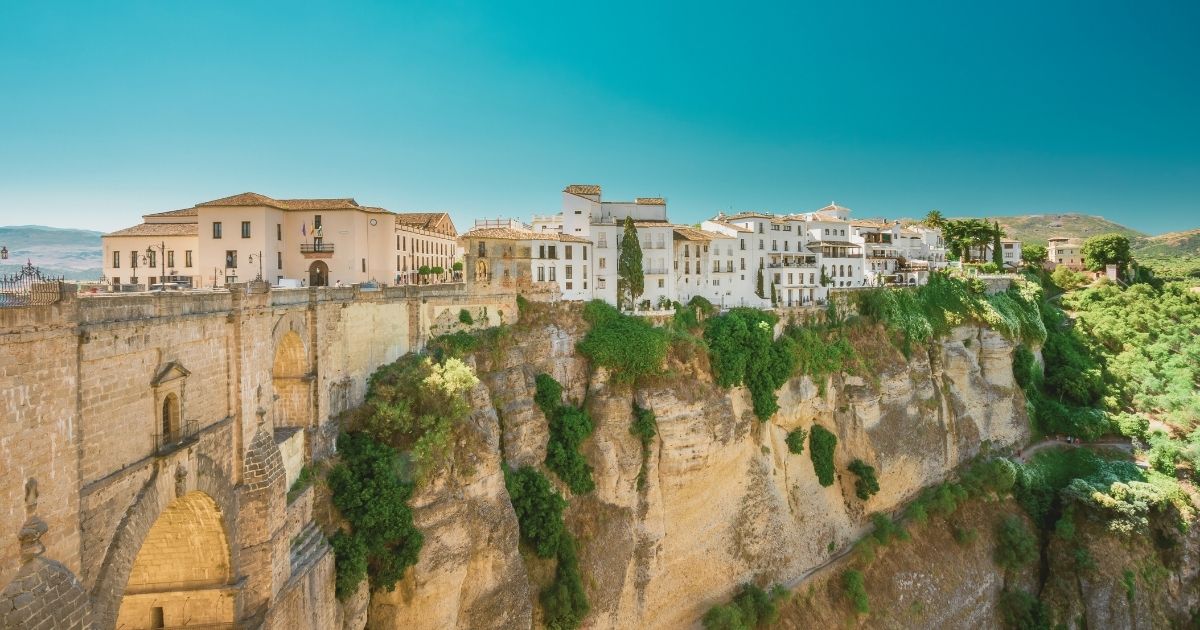Spain is a country known for its rich history, vibrant culture and dazzling landscapes. Beyond its famous cities, the country is home to a multitude of charming villages that offer exceptional quality of life, especially attractive to digital nomads. These small paradises combine the tranquility of rural life with the modern comforts needed to work remotely. In this article, we present the 10 best Spanish villages to live in, ideal for those looking for a perfect balance between productivity and relaxation.
For a digital nomad in Spain, life in a Spanish town can be an enriching experience. With a welcoming community, lower cost of living, and the possibility of enjoying nature and local gastronomy, these towns offer an ideal environment for those looking for a change of pace without sacrificing connectivity and access to essential services. In addition, the proximity to large cities allows you to enjoy the best of both worlds: the serenity of the rural environment and the vibrant urban life.
What do we consider a village?

In Spain, the number of inhabitants, cultural, administrative, and social aspects define the difference between a village, town, and city. When considering villages to live in Spain, a town stands out due to specific attributes that separate it from cities and larger urban areas.
- The population of a village generally ranges between a few hundred and several thousand inhabitants. Although there is no exact number that defines a village from a small town, in contrast, compared to cities, these places are significantly smaller in terms of population.
- A town’s administrative structure is simpler than that of a city. In addition, villages usually have a town hall that manages local affairs, and the administration is closer and more accessible to residents.
- The lifestyle in the villages is noticeably different. Specifically, life in a small town is characterized by a slower pace, a strong connection with the community, and a quieter, safer environment. As a result, the inhabitants usually get to know each other, and community relationships are closer and more personal.
- Although the infrastructure and services in the villages may be less extensive than in the cities, they still offer the necessary amenities for a comfortable life. For instance, many towns have local shops, markets, health centers, schools, and, increasingly, high-speed internet connections, which are crucial for digital nomads.
- Finally, the connection with nature is a distinctive aspect of the villages. Indeed, these places are often surrounded by natural landscapes, such as mountains, fields, and coasts, providing an ideal environment for those looking for a healthier lifestyle and a deeper connection with nature.
Differences between a town, a city, and villages to live in Spain

Understanding the differences between a town, city, and village is essential for finding the ideal place to settle. This is especially true for digital nomads seeking balance between tranquility and connectivity. Before exploring the best villages to live in Spain, let’s look at the key distinctions between these three types of settlements.
Pueblo
As we have already said, a village—or pueblo—is a medium-sized community with a population between a few hundred and several thousand. Villages offer basic services, such as schools, health centers, shops, and local markets, enough for a comfortable life.
The local administration is handled by a city council, ensuring more direct and accessible management for residents. Life in a village is quieter and more communal, fostering a strong sense of belonging among its inhabitants. Villages are typically well connected to nearby cities, offering residents the best of both worlds: the tranquility of rural life and the convenience of urban services. While job opportunities may be limited, they are often enough for those seeking a more relaxed lifestyle.
Ciudad
A city (Ciudad) is a much larger and more complex entity with a population that can range from several thousand to millions of inhabitants. Cities are centers of economic, cultural, and administrative activity, offering a wide range of services and job opportunities. Their infrastructure is extensive, including public transport, hospitals, universities, shopping centers, and a wide variety of entertainment and cultural options.
Life in a city is more accelerated and anonymous, with a fast pace of life and less community interaction compared to villages. However, cities offer greater employment opportunities and access to specialized services, making them ideal for those looking for a vibrant and dynamic environment. City administration is more complex and extensive, reflecting their size and diversity.
Aldea
An “Aldea” is a very small settlement, generally with a population of less than 500 inhabitants. These villages usually have minimal infrastructure, with few local services, such as a grocery store, a primary school, and sometimes a health center. Life in a village is extremely quiet and closely connected to nature, ideal for those looking for a simple and self-sufficient lifestyle.
A village’s administration can depend on a nearby larger municipality, and local job opportunities are limited. This often forces residents to travel to nearby towns or cities to work. This leisurely environment is perfect for those who want an unhurried life, although it requires a disposition to adapt to fewer amenities and services.
Top 10 villages to live in Spain as a digital nomad

Spain is a country that offers an incredible diversity of destinations, from vibrant cities to peaceful rural villages to live in Spain. For digital nomads, finding the perfect balance between connectivity, quality of life, and an inspiring environment is essential. In this section, you’ll discover the 10 best villages to live in Spain as a digital nomad. Each of these locations combines a relaxed atmosphere with the necessary amenities to work remotely, making them ideal destinations for both professional success and personal well-being.
1. Ronda, Málaga
Ronda, located in the province of Malaga, is a picturesque town known for its location on a gorge dividing the city. This stunning natural setting offers breathtaking views, inspiring creativity and peace. With its Mediterranean climate, Ronda enjoys warm summers and mild winters, perfect for those avoiding extreme weather.
Ronda provides a range of accommodations, from modern apartments to charming Andalusian-style boutique hotels. Safety is highly valued by residents, offering tranquility and a strong sense of community.
The town is well-connected by road and train to cities like Malaga and Seville, making travel easy. The mix of history, culture, and natural beauty makes Ronda one of the best towns in Spain for digital nomads.
2. Sitges, Barcelona
Located in the province of Barcelona, Sitges is renowned for its beautiful beaches, vibrant cultural life, and as one of the best villages to live in Spain. Its mild, sunny climate year-round makes it ideal for digital nomads who enjoy outdoor activities in any season. Accommodation options in Sitges are diverse, from modern apartments to traditional houses with sea views.
Sitges is celebrated for its natural beauty and inclusive, welcoming community, attracting a diverse mix of international residents. This multicultural atmosphere offers a great support network and networking opportunities for digital nomads.
The town is well-connected by train to Barcelona, providing easy access to the city’s infrastructure. Additionally, Sitges boasts a variety of cafes, restaurants, and coworking spaces, making it a dynamic and attractive place to live and work.
3. Cadaqués, Girona
Cadaqués, located in the province of Girona, is a charming coastal town known for its natural beauty and artistic vibe, which has attracted numerous artists, including Salvador Dalí. The stunning Mediterranean views and mild climate make Cadaqués an inspiring place for digital nomads. The town offers various accommodation options, from cozy sea-view apartments to traditional, charming houses.
Safety and tranquility are highly valued in Cadaqués, creating a peaceful environment ideal for focus and productivity. The town is connected by road to Figueres and Girona, offering easy access to urban services when needed. Its proximity to these cities also allows residents to enjoy cultural and entertainment options while living in a quieter, more relaxed setting.
4. Frigiliana, Málaga
Frigiliana, located in the province of Malaga, is a charming white town in the mountains with narrow cobbled streets. The town enjoys a warm, sunny climate most of the year, offering excellent quality of life. Frigiliana is known for its safety and welcoming community, making it one of the best villages to live in Spain for digital nomads.
Accommodation in Frigiliana is affordable and high-quality, with a mix of modern apartments and traditional houses. The town is connected to Malaga, offering easy access to urban services when needed. Panoramic views of the mountains and sea, along with the natural environment, make Frigiliana ideal for creativity and productivity. The village’s rich history and culture provide endless opportunities for exploration during leisure time.
5. Altea, Alicante
Located in Alicante, Altea is a charming village to live in Spain known for its picturesque old town and sea views. The warm climate and relaxed atmosphere make Altea perfect for digital nomads. The village offers various accommodations, from modern apartments to traditional villas with all comforts.
Altea is a safe, welcoming town where visitors quickly feel at home. It is well-connected by train and road, offering easy access to Costa Blanca cities. Altea’s vibrant cultural scene, with events and festivals, creates a stimulating environment for digital nomads. Altea stands out as one of the best villages to live in Spain for a balanced lifestyle.
6. Cudillero, Asturias
Cudillero, in Asturias, is a picturesque fishing village known for its colorful houses and natural port. The climate is cooler and wetter than in other Spanish regions, ideal for those preferring milder weather. The village offers cozy accommodations, including apartments with sea views and traditional houses.
Cudillero provides excellent quality of life, with high security and a friendly, welcoming community. The town is well-connected by road and train to Oviedo and Gijón. With its beaches and cliffs, it offers a perfect setting for inspiration and relaxation. It’s ideal for digital nomads seeking a quiet, well-connected place.
7. Vejer de la Frontera, Cádiz
Vejer de la Frontera, in the province of Cadiz, is a charming white village on a hill. From its vantage point, it offers stunning panoramic views. With a mild and sunny climate for most of the year, Vejer offers an exceptional quality of life. Accommodation is varied, from cozy apartments to traditional houses that retain their historical charm. These advantages make it a recommended place to live in Spain.
Safety is excellent, and the town has a welcoming, dynamic community with many events and activities for integration. Vejer is well-connected by road to Cadiz and Jerez. The blend of natural beauty, history, and cozy atmosphere makes this town perfect for digital nomads seeking a peaceful, inspiring work environment.
8. La Orotava, Tenerife
La Orotava, on Tenerife, is a picturesque village to live in Spain, known for its historical architecture and subtropical climate. This town is ideal for digital nomads seeking a warm, welcoming environment. La Orotava offers various accommodation options, from modern villas to traditional houses, all with necessary comforts.
Safety and tranquility are standout features, making it perfect for focus and creativity. The town is well-connected by road, with easy access to Santa Cruz de Tenerife and other attractions. La Orotava’s rich history, culture, and proximity to parks and beaches provide plenty of opportunities for exploration. It’s one of the best villages to live in Spain.
9. Hondarribia, Guipúzcoa
Hondarribia, in the province of Guipúzcoa, is a charming coastal town known for its well-preserved old town and its proximity to the sea. The Atlantic climate provides a fresh and pleasant environment, ideal for concentration and creativity. Hondarribia offers an excellent quality of life and a variety of accommodation options, including modern apartments and traditional houses.
Security is high and the local community is welcoming and friendly. The town is connected by road and train to San Sebastian and other cities in the Basque Country, which facilitates travel and access to urban services. The combination of natural beauty, history and a quiet atmosphere makes Hondarribia a perfect place for digital nomads looking for an inspiring and well-connected environment.
10. Trujillo, Cáceres
Trujillo, located in the province of Cáceres, is a historic village to live in Spain known for its Plaza Mayor and architectural charm. With a continental Mediterranean climate offering hot summers and cool winters, Trujillo provides a peaceful atmosphere and a high quality of life. Accommodation is affordable and varied, from cozy apartments to beautifully restored historic homes.
The village is also very safe, with a friendly and welcoming local community. Additionally, Trujillo is well-connected by road to cities like Cáceres and Mérida, offering easy access to services and transport. Furthermore, the town’s rich history, serene environment, and vibrant cultural life make it an inspiring place to live and work. This makes it especially ideal for digital nomads seeking balance and creativity in one of the best villages to live in Spain.
Connect to the world without borders. Your journey starts with just one click! ✈️
Do you work from anywhere in the world, travel frequently, or love staying connected while exploring new destinations? With the new monthly eSIM plans, forget about swapping SIM cards every time you cross a border.
With these plans, you’ll enjoy:
🌍 Continuous connection across multiple countries
📱 Share internet with all your devices
💳 Automatic payments: no more recharges or renewals
🧳 Perfect for those who make the world their office
Activate it once and stay connected on the go, hassle-free.
🏷️ Use the code NOMADA to get 10% off every month for 12 months.
Are you ready to start your adventure without interruptions?




